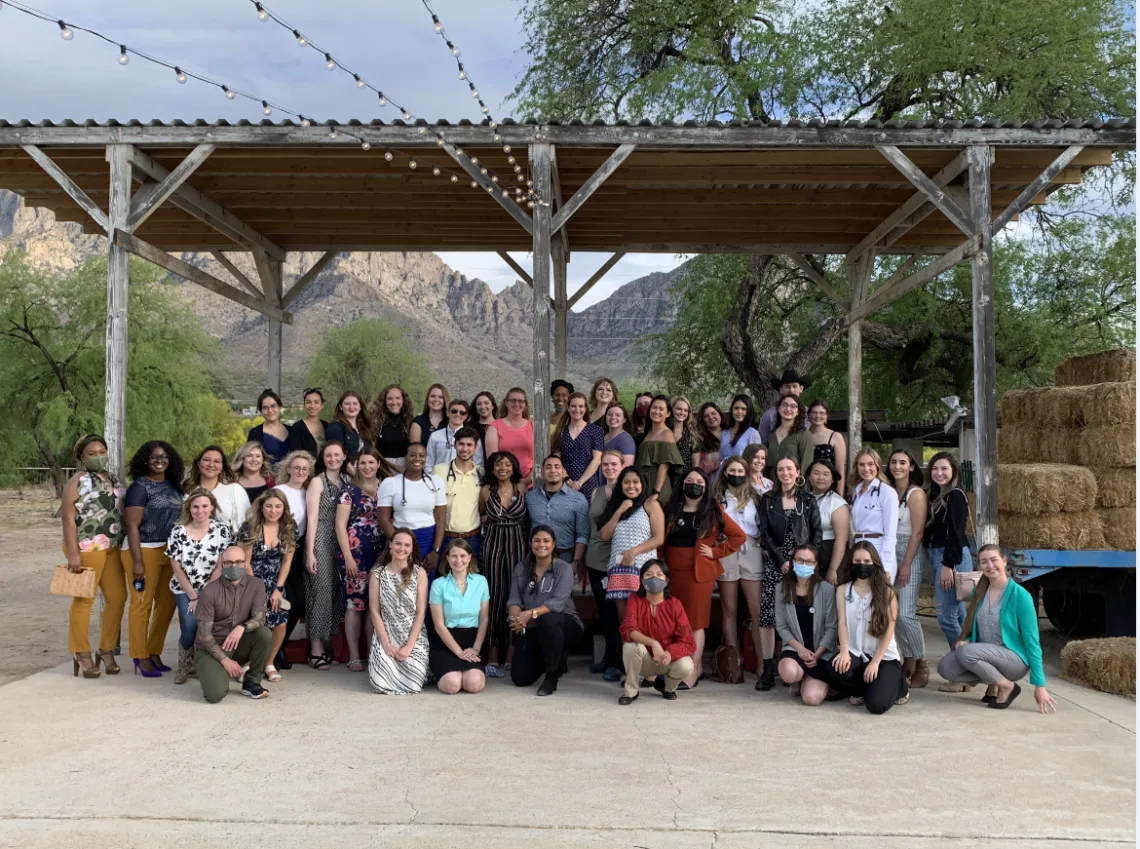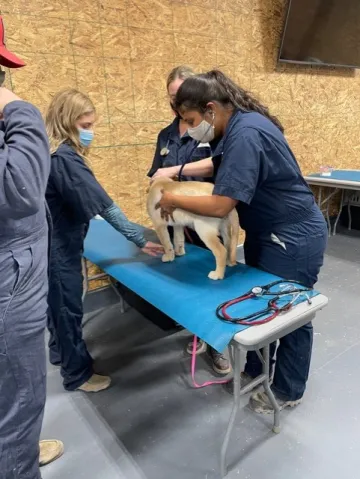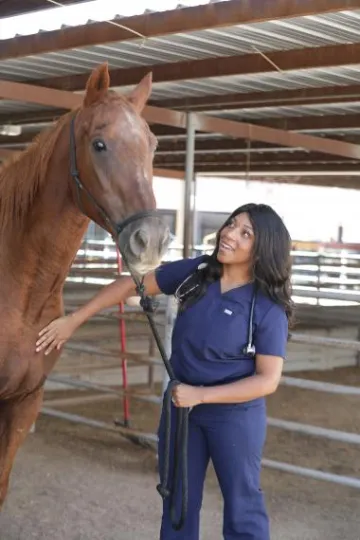Why Diversity Matters in Veterinary Medicine
Diversity is a critical issue facing veterinary medicine today. Learn what the College of Veterinary Medicine is doing to build an inclusive community.

Diversity is a critical issue facing veterinary medicine today. Learn how The University of Arizona College of Veterinary Medicine builds diversity, equity, and inclusion into its program.
In the United States, veterinary medicine is currently one of the least racially and ethnically diverse fields: nearly 90% of veterinarians are white, while less than 2% are Latino and Hispanic and nearly none are Black. The Arizona College of Veterinary Medicine, however, aims to innovate the field on every level, including recruiting and supporting diverse students.
A focus on diversity involves extending students from a wide variety of backgrounds. an opportunity to pursue veterinary medicine The holistic admissions process reflects a more significant commitment to serving and supporting a diverse community of students as they explore their lifelong learning and well-being pathways. Personal experiences and a commitment to the University’s values become more significant in a candidate than GRE scores and allow potential students to express their strengths throughout a multifaceted admissions process.

Many prerequisites for veterinary school, such as clinical hours, can be prohibitive because they require potential students to forgo an income, a luxury not everyone can afford. “The very future of the veterinary profession is dependent on our ability to serve society as a whole,” says Dr. Julie Funk, Dean of the Arizona College of Veterinary Medicine, which does not require applicants to have a minimum number of hours of clinical experience and embraces a holistic admissions process. Arizona has welcomed its first two cohorts of DVM students and both classes included over 35% of students from underrepresented groups.
As a new program, Arizona is uniquely poised to design evidence-based systems from the very beginning. This advantage means the College can integrate diversity into all program areas, rather than attempting to renovate a long-established program.
“Addressing the lack of diversity, equity and inclusion in veterinary medicine is more than an effort to give our profession an invaluable edge, it is the right thing to do,” says Dr. Christina V. Tran, a founding board member of the Multicultural Veterinary Medical Association (MCVMA) and faculty member at the College of Veterinary Medicine.
In 2020, the MCVMA wrote to the American Veterinary Medical Association with actionable items to address the lack of diversity in veterinary medicine. Items include recruiting at Historically Black Colleges and Universities, Hispanic-Serving Institutions and Tribal Colleges and Universities, plus making admissions requirements more accessible to students with significant financial needs. The MCVMA also urges veterinary schools to go beyond test scores to consider personal history during admissions since students are unique, multidimensional individuals with distinct abilities and past experiences.
Committed to Change
Over the last few years, the United States has reached an all-time high in pet ownership, with a large percentage of new owners identifying with an underrepresented minority. For example, between 2008 and 2018, white-identified pet ownership increased by 2%, while Latino and Hispanic pet ownership increased 44% and Black pet ownership increased by 24%, according to a 2019 study.
A Student Support Coordinator at the College of Veterinary Medicine, Billy Worthy, says learning about how different cultures explore pet ownership is an integral part of training to become a veterinarian. Diversity of thought encourages creativity and innovation and ultimately benefits the health and safety of the patients. “We want all students to be able to navigate cultural differences and recognize their own cultural biases. Having cultural humility doesn’t just affect you interpersonally, but also how you work with the animals and the owners of those animals.”
Creating a Culture of Well-being

The well-being of students, especially those who have been historically underrepresented in the field, means respecting and honoring people’s lived experiences. Students are encouraged to bring their whole selves to the classrooms, something many underrepresented students are used to leaving at the door. “Vet school should be rigorous, but it should not be spirit-killing,” says Worthy.
Students can bring their whole selves not only to the classroom but also to the College’s vibrant cultural events and clubs. Worthy regularly works to organize events that celebrate the many aspects that make students unique.
Worthy adds that many students share that they have never seen a veterinarian that looks like them. To them, he says, “You belong here. You are bringing something to the table that is unique to only you. You add value to what we are creating here.”
Learn More
See what the Arizona College of Veterinary Medicine is doing to build and sustain a culturally inclusive community.
